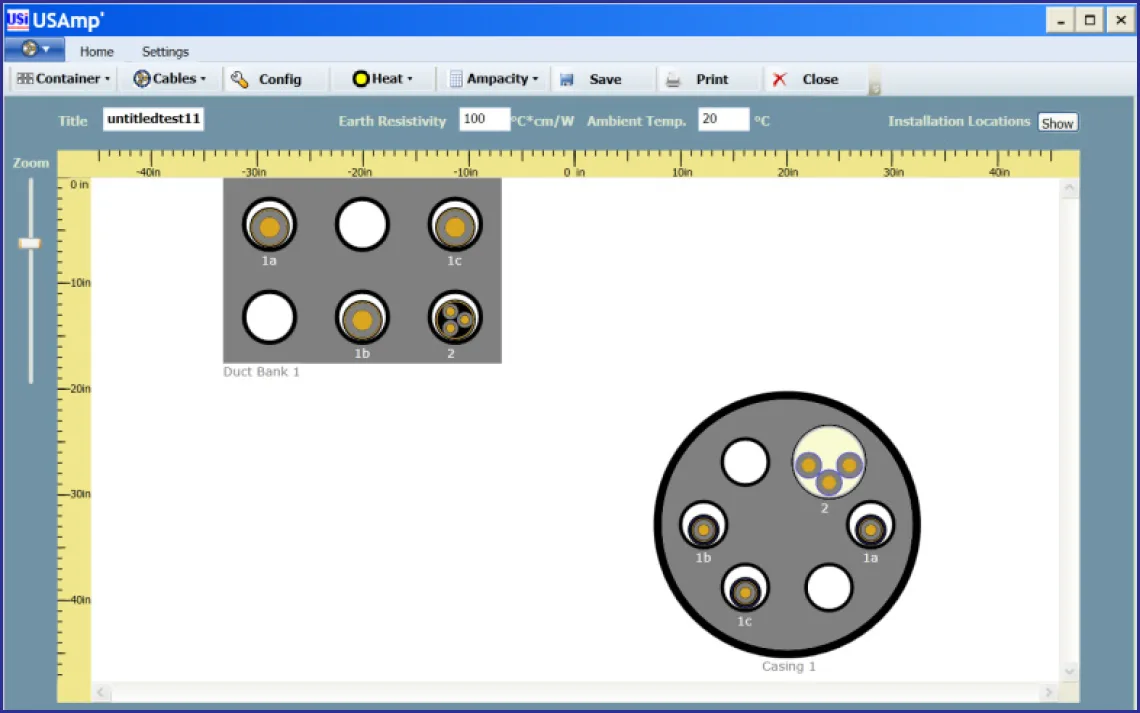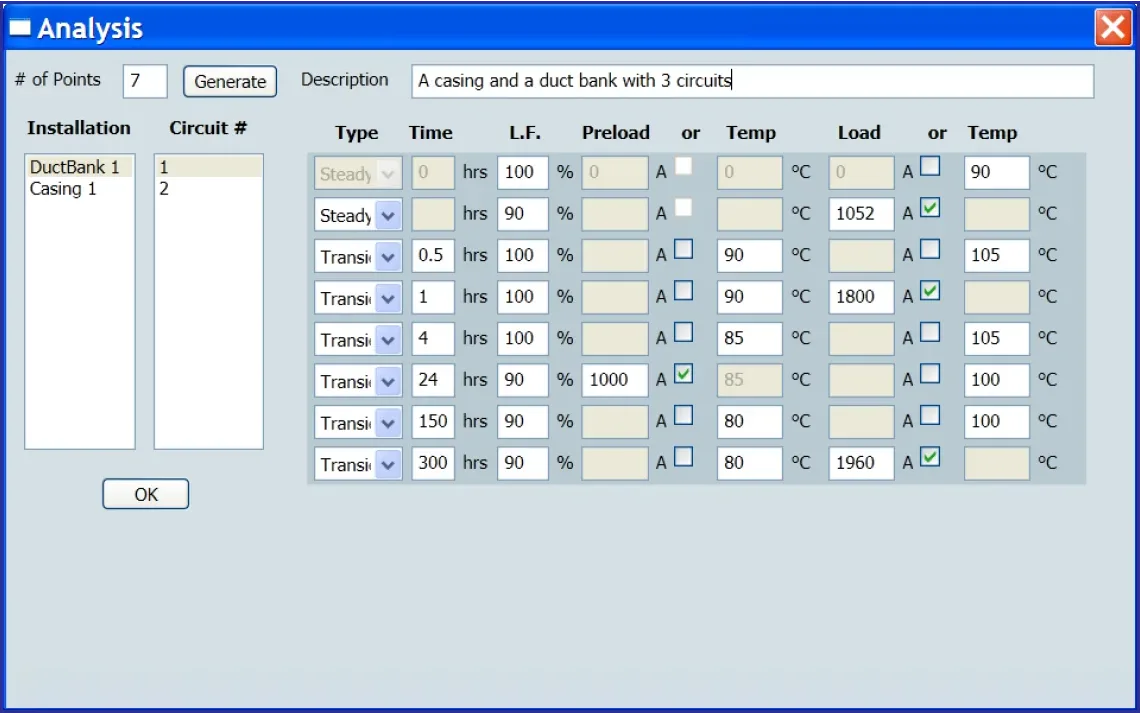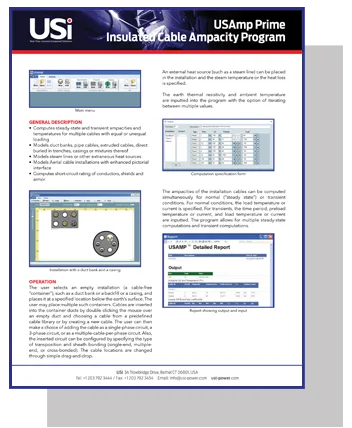General Description
- Computes steady-state, transient ampacities and temperatures for multiple cables with equal or unequal loading
- Models duct banks, pipe cables, extruded cables, direct buried in trenches, casings or mixtures thereof
- Models steam lines or other extraneous heat sources
- Models aerial cable installations with enhanced pictorial interface
- Computes short-circuit rating of conductors, shields and armor
Operation
The user selects an empty installation (a cable-free “container”), such as a duct bank or a backfill or a casing, and places it at a specified location below the earth’s surface. The user may place multiple such containers. Cables are inserted into the container ducts by double clicking the mouse over an empty duct and choosing a cable from a predefined cable library or by creating a new cable. The user can then make a choice of adding the cable as a single-phase circuit, a 3-phase circuit, or as a multiple-cable-per-phase circuit. Also, the inserted circuit can be configured by specifying the type of transposition and sheath bonding (single-end, multiple-end, or cross-bonded). The cable locations are changed through simple drag-and-drop.
An external heat source (such as a steam line) can be placed in the installation and the steam temperature or the heat loss is specified.
The earth thermal resistivity and ambient temperature are inputted into the program with the option of iterating between multiple values.
The ampacities of the installation cables can be computed simultaneously for normal (“steady state”) or transient conditions. For normal conditions, the load temperature or current is specified. For transients, the time period, preload temperature or current, and load temperature or current are inputted. The program allows for multiple steady-state computations and transient computations.
Features
- Completely redesigned graphical user interface, from scratch
- “What you see is what you get”; all installation and cable graphics are to scale (including the multiple layers in a cable)
- Easy drag-and-drop of cables between ducts
- Point-and-click editing
- NERC/FERC requirements compatible
- Export report showing outputs and inputs into Adobe PDF, EXCEL or WORD
- AEIC cable specifications are “built-in” to the program
- Many cables may be rated simultaneously
- Short-circuit ratings of conductors, shields and armor
- In-air cable ratings
- Switch between Metric and English units
Input of cable designs is facilitated by a cable “expert system”. The AEIC cable specifications are “built-in” to the program. The user inputs basic parameters (cable type, insulation type, voltage rating and conductor area). Then the program retrieves the standard dimensional features and calculation constants for the cable and displays them. They may be edited “on-screen” to accommodate “non-standard” features.
Methodology
The program is compliant with the IEC 60287 standard for the steady-state ratings and IEC 60853 for the transient ratings. Furthermore, IEC 60949 is used for short-circuit ratings.
DOWNLOAD
To learn more about USAmp Prime: Insulated Cable Ampacity Software, please download the PDF Brochure.










